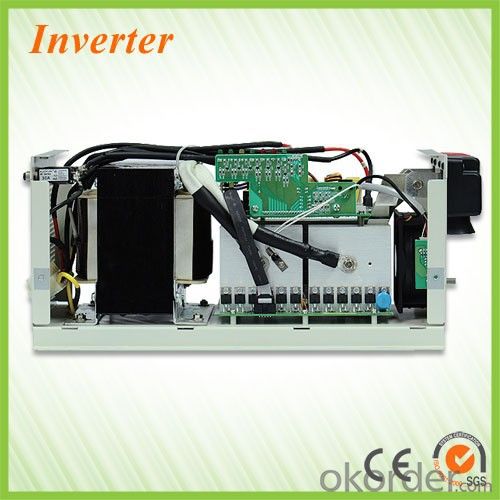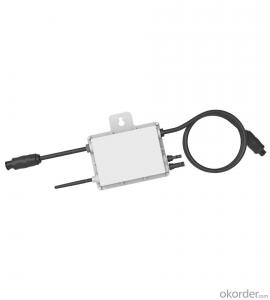0.5-30kVA Solar Inverter Wifi Power Inverter with Charger Fully Automatic AC Stabilized Power Supply
- Loading Port:
- China main port
- Payment Terms:
- TT or LC
- Min Order Qty:
- 1 pc
- Supply Capability:
- 1000 pc/month
OKorder Service Pledge
OKorder Financial Service
You Might Also Like
ZTY series high accuracy fully automatic AC stabilized Power Supply is a key series of our stabilizing products. It mainly consists of auto-transformer, servo motor, automatic control circuit. When the utility is not stable or the load fluctuates, the automatic control circuit modifies the control output according to the input voltage change of power supply, with driving the servo motor, and then the servo motor adjusting the carbon brush of auto-transformer to regulate the output voltage at its rating and remain stable.
Single Phase | |||||||||
VA Rating | 0.5KVA | 1KVA | 2KVA | 3KVA | 5KVA | 10KVA | 15KVA | 20KVA | 30KVA |
INPUT | |||||||||
Phase | Single Phase+N+GND | ||||||||
Voltage Range | 160Vac-250Vac | ||||||||
OUTPUT | |||||||||
Voltage | 220V | ||||||||
Voltage Precision | ≤±3% | ||||||||
Frequency | 50/60Hz | ||||||||
Over-Voltage Protection | Output Voltage 250V±5V | ||||||||
Low-Voltage Protection | Output Voltage 183V±5V | ||||||||
Efficiency | ≥96% | ||||||||
OTHERS | |||||||||
Display Mode | LED / METER | ||||||||
Input/Output Device | Optional Plug; Socket / Terminal | ||||||||
Waveform Distortion | No affixation Waveform Distortion | ||||||||
Response Time | (±10% Varies) <1s | ||||||||
Insulation Resistance | ≥2MΩ | ||||||||
Anti-Electricy Intension | Low frequency sine voltage 1500V take 1 minute no rout and camber phenomena | ||||||||
Ambient Temperature | 0℃-40℃ | ||||||||
Relative Humidity | ≤95% | ||||||||
Working | Continue | ||||||||
Dimension(WxDxH)mm | 150x247x144 | 150x247x200 | 150x285x260 | 175x360x305 | 220x485x430 | 330x370x612 | 530x400x732 | ||
Net Weight(kg) | 4.3 | 4.8 | 8.2 | 9.5 | 15.2 | 31 | 53 | 59 | 91 |
Packing(WxDxH)mm | 235x360x235 | 235x360x290 | 230x395x350 | 278x470x415 | 280x555x495 | 430x500x690 | 635x500x830 | ||
Gross Weight(kg) | 4.8 | 5.3 | 8.8 | 10.1 | 15.9 | 32 | 56 | 61.3 | 94.5 |
MODEL | ZTY Three Phase | |||||
VA Rating | 3KVA | 6KVA | 10KVA | 15KVA | 20KVA | 30KVA |
INPUT | ||||||
Phase | Three Phase+N+GND | |||||
Voltage Range | Line Voltage 277Vac-433Vac | |||||
OUTPUT | ||||||
Voltage | 380V | |||||
Voltage Precision | ≤±3% | |||||
Frequency | 50/60Hz | |||||
Over-Voltage Protection | Output Voltage 250V±5V | |||||
Low-Voltage Protection | Output Voltage 183V±5V | |||||
Efficiency | ≥96% | |||||
OTHERS | ||||||
Display Model | LED / METER | |||||
Input/Output Device | Terminal | |||||
Waveform Distortion | No Affixation Waveform Distortion | |||||
Response Time | (±10% Varies) <1s | |||||
Insulation Resistance | ≥2MΩ | |||||
Anti-Electricy Intension | Low Frequency Sine Voltage 1500V Take 1 minute No Rout and Camber phenomena | |||||
Ambient Temperature | 0℃-40℃ | |||||
Relative Humidity | ≤95% | |||||
Working | Continue | |||||
Dimension(WxDxH)mm | 200x480x395 | 330x350x702 | 330x380x752 | 530x400x732 | ||
Net Weight(kg) | 14.5 | 35 | 37 | 51 | 58 | 95 |
Packing(WxDxH)mm | 260x555x505 | 460x435x790 | 555x420x840 | 635x500x830 | ||
Gross Weight(kg) | 16.8 | 37.6 | 40 | 54.2 | 61.6 | 105 |
· Q. What is an UPS and What it is for ?
An uninterruptible power supply (UPS) is a device that allows your computer or telephone switch or critical equipement to keep running for at least a short time or longer time when the primary power source is lost. It also provides protection from power surges, spikes, brownouts, interference and other unwanted problems on the supported equipment.
· Q. How long the UPS to run when power goes?
This can take 3 paths.
1.You can pick a UPS that is rated for pretty much the full VA you need so it will be running at 100% of capability and will thus last 'n' minutes.
2.You can pick a UPS that is rated at a much higher VA value than you really need so, for example, is running at 50% of capability and will thus last for longer than the UPS from option 1.
3.You can use extra external battery packs to run for longer. If charging capability allows, the more and the bigger batteries you take with, the longer time UPS runs.
or using a generator after about 6 hours, it will be more cost-effective, with a short runtime UPS to bridge the generator start-up gap.



- Q: What is the importance of surge protection in a solar inverter?
- Surge protection is crucial in a solar inverter as it safeguards the system against voltage spikes or power surges. These surges can occur due to lightning strikes, grid fluctuations, or other electrical disturbances, and can potentially damage the sensitive electronics in the inverter. Surge protection devices divert excessive voltage away from the solar inverter, preventing costly damage and ensuring the efficient and uninterrupted operation of the solar power system.
- Q: What is the typical installation process for a solar inverter?
- The typical installation process for a solar inverter involves several steps. Firstly, the location for the inverter needs to be determined, usually close to the solar panels and near the main electrical panel. The inverter is then mounted securely on a wall or other suitable surface. Next, the DC input wires from the solar panels are connected to the input terminals of the inverter. The AC output wires from the inverter are then connected to the main electrical panel. Finally, the inverter is connected to a monitoring system, if applicable, to track and manage the solar power generation. It is important to follow all safety guidelines and local electrical codes during the installation process.
- Q: Are solar inverters compatible with different solar panel technologies?
- Yes, solar inverters are generally compatible with different solar panel technologies. Most modern solar inverters are designed to work with a wide range of solar panel technologies, including monocrystalline, polycrystalline, and thin-film panels. However, it is always recommended to check the specifications and compatibility of the specific inverter with the desired solar panel technology before making a purchase.
- Q: What is the maximum DC input current of a solar inverter?
- The maximum DC input current of a solar inverter can vary depending on the specific model and its design. However, in general, the maximum DC input current of a solar inverter is determined by its capacity and is usually specified by the manufacturer.
- Q: Can a solar inverter be used in regions with high levels of dust or debris?
- Yes, solar inverters can be used in regions with high levels of dust or debris. However, it is important to regularly clean and maintain the solar panels and inverters to ensure optimal performance and prevent any potential damage caused by the accumulation of dust or debris.
- Q: What is the role of a solar inverter in a grid-tied system?
- The role of a solar inverter in a grid-tied system is to convert the direct current (DC) electricity generated by the solar panels into alternating current (AC) electricity that is compatible with the electrical grid. It also ensures the synchronization and stability of the solar power system with the grid, allowing excess energy to be fed back into the grid and enabling the system to draw power from the grid when needed.
- Q: Can a solar inverter be used in off-grid systems?
- Yes, a solar inverter can be used in off-grid systems. Off-grid systems rely on solar panels to generate electricity and store it in batteries for use when the sun is not shining. A solar inverter is necessary to convert the direct current (DC) produced by the solar panels into alternating current (AC) that is usable by common household appliances.
- Q: Can a solar inverter be used with electric vehicles?
- Yes, a solar inverter can be used with electric vehicles. It allows for the conversion of DC power generated by solar panels into AC power that can be used to charge the electric vehicle's battery. This helps to make the charging process more efficient and environmentally friendly by utilizing renewable energy sources.
- Q: How does a solar inverter handle voltage fluctuations?
- A solar inverter handles voltage fluctuations by constantly monitoring the input voltage from the solar panels and adjusting its output voltage accordingly. It maintains a stable output voltage even when there are fluctuations in the input voltage, ensuring that the electricity generated by the solar panels is suitable for use in the electrical grid or for powering appliances.
- Q: Can a solar inverter be used with a grid-interactive system?
- Yes, a solar inverter can be used with a grid-interactive system. In fact, a solar inverter is an essential component of a grid-interactive system as it converts the DC (direct current) electricity produced by solar panels into AC (alternating current) electricity that can be used to power homes or businesses and also fed back into the grid. The solar inverter also manages the flow of electricity between the solar panels, batteries (if present), and the grid, ensuring efficient and safe operation of the grid-interactive system.
Send your message to us
0.5-30kVA Solar Inverter Wifi Power Inverter with Charger Fully Automatic AC Stabilized Power Supply
- Loading Port:
- China main port
- Payment Terms:
- TT or LC
- Min Order Qty:
- 1 pc
- Supply Capability:
- 1000 pc/month
OKorder Service Pledge
OKorder Financial Service
Similar products
Hot products
Hot Searches
Related keywords




























